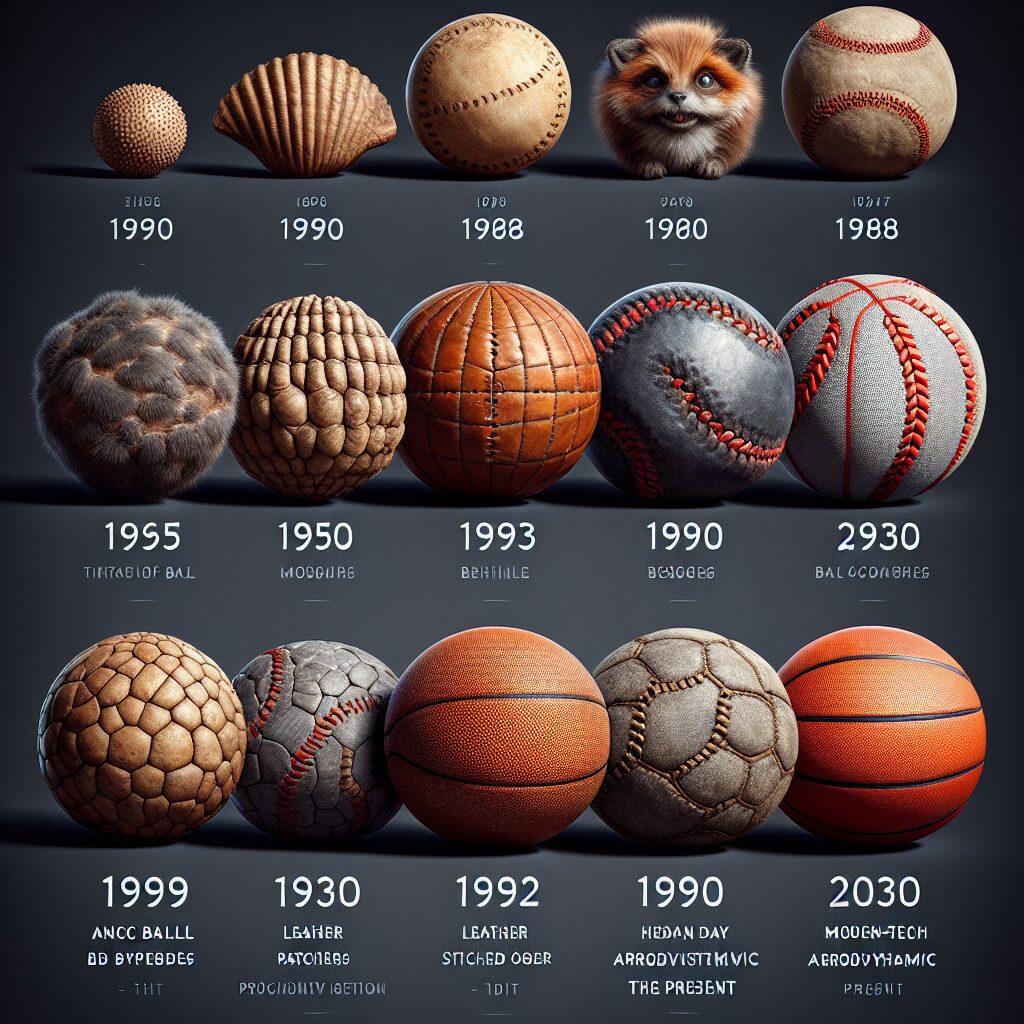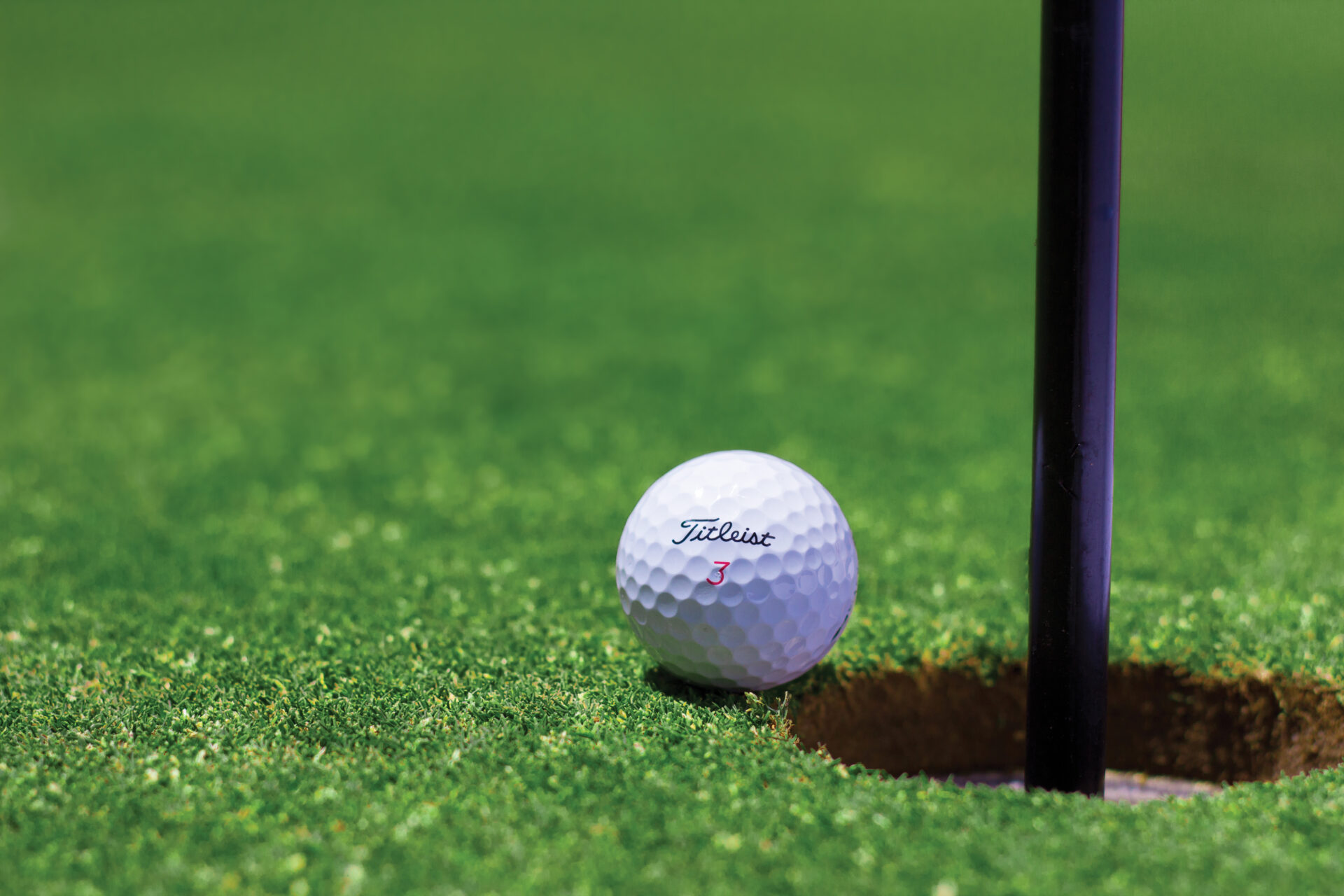Historical Changes in Ball Design have played a significant role in shaping various sports throughout the ages. From the first rudimentary ball made of animal bladders to the modern-day technological marvels, the evolution of ball design has had a profound impact on the way games are played.
One unique fact about the historical changes in ball design is the use of different materials over time. In ancient times, balls were commonly crafted out of animal bladders, such as sheep or pig bladders, which provided a lightweight and somewhat bouncy surface. As civilizations evolved, so did ball materials. For example, the Mayans used rubber balls, which had a more elastic property, ideal for their ball game known as “pok-a-tok.” Later, the invention of synthetic materials like vulcanized rubber and various polymers allowed for even more precise control over ball design and performance.
Moving onto the specific impacts of historical changes in ball design, it becomes evident that the evolution has not only impacted the way games are played but also the safety and fairness of these sports. For instance, the introduction of stitched leather balls in early baseball games enabled players to have better control and aim, improving the overall gameplay experience. In addition, advancements in ball design have made sports safer, as modern soccer balls, with their improved aerodynamics and impact absorption capabilities, reduce the risk of injuries during intense matches.
In the forthcoming sections, this article will delve into the key takeaways of historical changes in ball design and discuss their influence on specific sports, such as soccer, basketball, and tennis. By exploring the unique features that emerged throughout the years, readers will gain a deeper understanding of how ball design has shaped the sports we know and love today. So, let’s delve into the fascinating world of Historical Changes in Ball Design and uncover the secrets behind these sporting essentials.
Key Takeaways
1. Historical changes in ball design have significantly influenced the evolution of various sports, including baseball, basketball, and football. The advancements in ball technology have enhanced the speed, accuracy, and overall performance of these sports.
2. The shift from using natural materials like leather and animal bladders to synthetic materials has revolutionized ball design. Synthetic materials, such as rubber and synthetic leather, offer increased durability, predictability, and consistency, leading to fairer gameplay and reduced dependence on weather conditions.
3. The introduction of specialized designs tailored to each sport’s requirements has further boosted performance. For instance, the addition of raised seams on baseballs allows pitchers to have better control and generate more spin, resulting in a wider variety of pitches. Similarly, the unique dimple pattern on golf balls enables players to achieve greater distance and accuracy in their shots.
4. Technical innovations, such as the introduction of air valves or the implementation of new manufacturing processes like vulcanization, have played a vital role in ball design. These advancements have led to improved air retention and better structural integrity, ensuring consistent performance over a longer period.
5. The changes in ball design have not been without controversies or challenges. Some alterations, like the lower inflation pressure in footballs, sparked heated debates about their impact on gameplay. Additionally, maintaining a balance between tradition and innovating the design to avoid altering the essence and spirit of the sport remains a constant struggle.
What are the Historical Changes in Ball Design?
Early Origins of Ball Design
The history of ball design can be traced back thousands of years, with early civilizations using various materials to create rudimentary balls for recreational purposes. From animal bladders to stone spheres, the evolution of ball design showcases the ingenuity and creativity of our ancestors.
Invention of the Modern Ball
The emergence of organized sports in the late 19th century brought about significant advancements in ball design. The invention of vulcanized rubber by Charles Goodyear revolutionized ball construction, as it provided superior durability and bounce. This breakthrough led to the creation of the modern ball, making sports more accessible and enjoyable for players worldwide.
Impact of Technological Innovations
In the 20th century, technological advancements led to further improvements in ball design. The introduction of synthetic materials, such as polymers and plastics, allowed for greater flexibility and durability. These materials also enabled manufacturers to create balls tailored for specific sports, optimizing their performance and enhancing player experience.
Specialized Ball Designs for Different Sports
Each sport has unique requirements, leading to the development of specialized ball designs. The size, weight, and surface of a ball may vary depending on the sport it is intended for. For example, soccer balls are made with a spherical shape for predictable trajectory, while golf balls feature dimples to control airflow and maximize distance. Understanding the specific needs of each sport has resulted in more efficient and effective ball designs.
Revolutionary Changes in Ball Technology
Recent years have witnessed revolutionary changes in ball technology, particularly in sports like tennis and golf. The integration of advanced materials and smart technologies has allowed for unprecedented control, accuracy, and performance. From tennis balls with microchips tracking each shot to golf balls with built-in GPS systems, these innovations are reshaping the way we play and experience sports.
Considerations for the Future
As technology continues to advance, the future of ball design holds exciting prospects. Scientists and engineers are continuously exploring new materials, aerodynamics, and smart features to further enhance ball performance and player engagement. The ongoing evolution of ball design ensures that sports remain dynamic and captivating for generations to come.
Top 5 Tips for Understanding Historical Changes in Ball Design
- How have early civilizations contributed to the development of ball design?
- What were the pivotal inventions that led to the creation of the modern ball?
- How have technological innovations influenced the evolution of ball design?
- What are some examples of specialized ball designs for different sports?
- What are the latest advancements in ball technology and what can we expect in the future?
Frequently Asked Questions
1. What are some examples of historical changes in ball design?
From medieval times to the present day, ball design has undergone significant transformations. Examples include the transition from handmade leather balls to mass-produced rubber soccer balls, the evolution of tennis balls from rubberized fabrics to pressurized containers, and the introduction of dimples on golf balls for improved aerodynamics.
2. How have historical changes in ball design impacted sports performance?
The changes in ball design have had a profound impact on sports performance. For instance, the introduction of synthetic materials in basketballs has enhanced grip and bounce, allowing players to perform agile moves with greater precision. Similarly, advancements in cricket ball technology have led to increased swing and spin, challenging batsmen and pushing the boundaries of the sport.
3. Why were historical changes in ball design necessary?
Historical changes in ball design were necessary to improve several aspects such as durability, safety, performance, and fairness in sports. Old ball designs often had limitations that impeded players’ abilities to fully showcase their skills. Moreover, advancements in technology and materials have provided opportunities for innovation, leading to better ball designs.
4. What challenges do manufacturers face when implementing historical changes in ball design?
Manufacturers face various challenges when implementing historical changes in ball design. These challenges include ensuring regulatory compliance, managing production costs, conducting thorough research and development, and maintaining the balance between tradition and innovation. Additionally, manufacturers must consider the impact of any changes on the overall game experience.
5. How do historical changes in ball design impact player safety?
Historical changes in ball design prioritize player safety through improvements in materials and construction. For example, baseballs and softballs have evolved to include synthetic cores that reduce impact injuries when hit by a bat. Soccer balls now utilize foam padding to minimize the risk of head injuries during headers. These changes have significantly enhanced player safety.
6. What role does technology play in historical changes in ball design?
Technology plays a crucial role in historical changes in ball design. Modern advancements in engineering, materials science, and aerodynamics have allowed manufacturers to analyze ball performance and make data-driven improvements. Computer simulations, wind tunnel testing, and pressure sensors contribute to the understanding and optimization of ball design parameters.
7. How do historical changes in ball design affect the game experience for spectators?
Historical changes in ball design have a direct impact on the game experience for spectators. For example, the introduction of colored golf balls enables easier tracking and enhances the visual aspect of the game. In sports like tennis and soccer, improved ball design adds excitement by allowing players to perform more incredible feats, thus captivating the audience.
8. Are historical changes in ball design solely driven by technological advancements?
No, historical changes in ball design are not solely driven by technological advancements. While technology plays a significant role, other factors such as player feedback, rule changes, safety regulations, and market preferences also influence the evolution of ball design. It is a collaborative effort between manufacturers, sporting organizations, and players.
9. How do historical changes in ball design impact the environment?
Historical changes in ball design have started to consider environmental impacts more seriously. Manufacturers now strive for greater sustainability by using eco-friendly materials, reducing waste during production, and promoting recycling programs for used balls. These actions contribute to minimizing the negative ecological footprint of ball manufacturing.
10. What does the future hold for historical changes in ball design?
The future of historical changes in ball design is dynamic and exciting. With rapid advancements in materials, technologies, and scientific understanding, we can expect more innovations aimed at improving game performance, safety, and sustainability. The future may bring revolutionary changes, such as self-inflating balls, customizable designs, or even interactive features, further enhancing the overall sporting experience.
Final Thoughts on Historical Changes in Ball Design
Historical changes in ball design have been vital in shaping the sporting landscape. Each evolution has brought about new possibilities, pushing the boundaries of human performance while prioritizing safety, fairness, and audience engagement. The continuous progress in ball design showcases the relentless pursuit of excellence and innovation in sports, providing players with the tools to achieve greatness.
As we look towards the future, it is fascinating to ponder the innovations that lie ahead. Whether it is through cutting-edge materials, advanced analytics, or novel designs, historical changes in ball design will continue to enhance sports, inspiring athletes and captivating spectators worldwide. Embracing these changes ensures that sports culture evolves organically, fostering a healthy and competitive spirit for generations to come.




